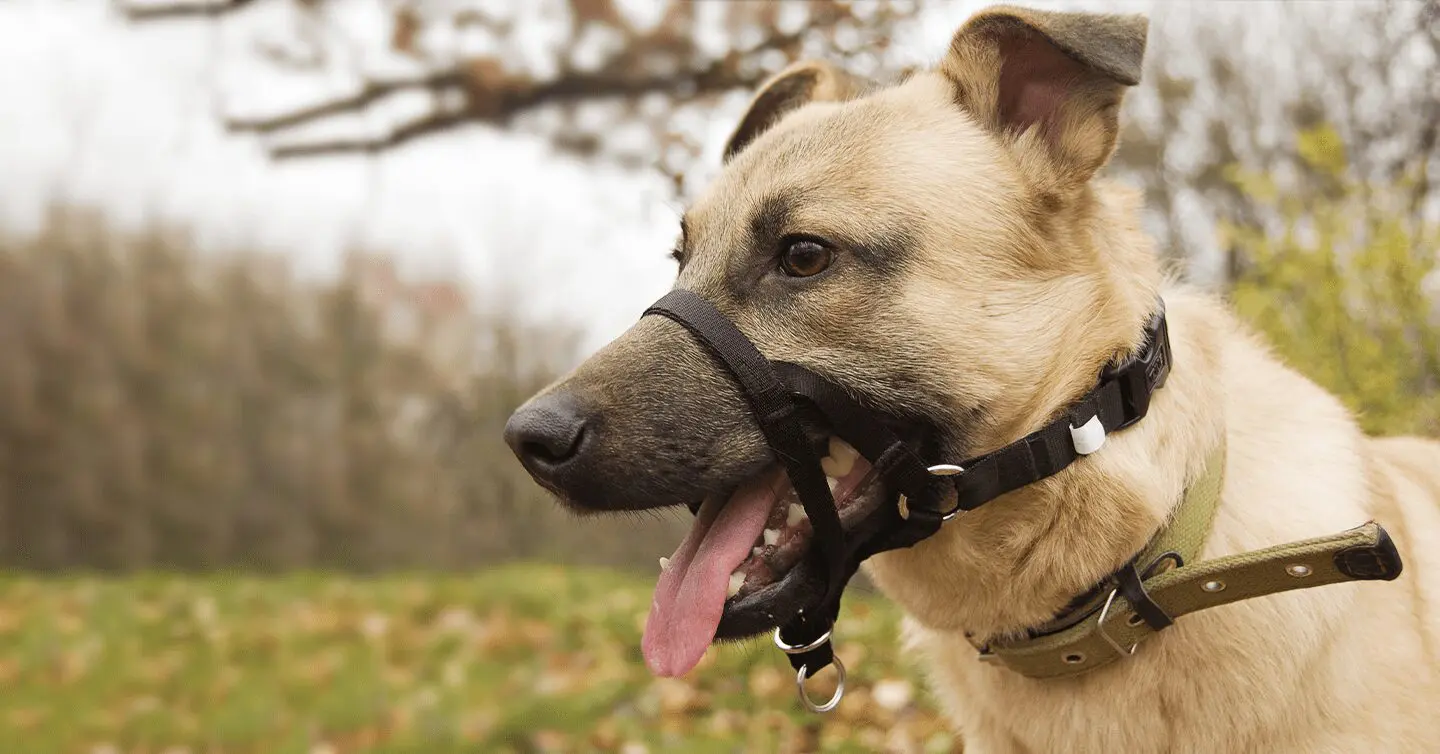Wireless dog fences provide dog owners with a reliable and convenient way to keep their four-legged friends safe and secure while allowing them to enjoy the outdoors. Unlike traditional physical fences, these fences use radio waves to create boundary lines that cannot be seen, making them an invisible yet effective alternative. With a receiver collar that emits a warning sound or static correction, these fences encourage pets to stay within the designated safe zone and stray away from potential danger. Keep reading to understand the benefits of wireless dog fences.
Advantages of a Wireless Dog Fence Over Traditional Fencing
When it comes to keeping your furry friend safe in your yard, there are many options available, including traditional fences and wireless dog fences. While physical fencing has been a popular option for many years, wireless dog fences provide many advantages that make them appealing to pet owners. In this article, we will discuss the benefits of using a wireless dog fence instead of traditional fencing.

Cost Savings
When it comes to pet ownership, there are countless expenses that owners have to account for. From food and toys to vet visits and grooming appointments, the costs associated with owning a pet can quickly add up. That’s why it’s important for pet owners to consider cost savings when they can, and a wireless dog fence is a perfect solution for those looking to save some money.
The installation process for a physical fence can take days, if not weeks, and can involve significant costs for materials, labor, and permits. In contrast, a wireless dog fence can be set up in a matter of hours and only requires a few basic tools and a willing homeowner.
The savings continue beyond the initial setup costs, as maintenance for a wireless dog fence is minimal. With a traditional fence, upkeep costs can quickly add up. Wooden fences need to be regularly repainted or re-stained, while chain link ones can rust or become bent out of shape. A wireless dog fence requires no upkeep from the homeowner, aside from replacing the rechargeable batteries in the receiver collar every few months.
Another significant way that a wireless dog fence saves money is through its overall cheaper cost. With a traditional fence, the costs mentioned above can quickly add up. In contrast, a wireless dog fence is usually a fraction of the cost of a physical fence, making it a popular option for homeowners on a budget.
Flexibility and Portability
A wireless dog fence offers pet owners unmatched flexibility and portability when it comes to pet containment systems. This type of pet fencing is ideal for pet owners who love to travel with their furry friends and take them on outdoor adventures. With a wireless dog fence, you can enjoy the freedom and convenience of easily moving the system around and setting it up wherever you go.
Unlike traditional dog fencing that requires digging and building, a wireless dog fence is designed to be lightweight and portable, making it easy to manage. This type of fencing system can be taken on camping trips, road trips, and any other outdoor excursions, giving you the peace of mind of knowing your furry friend is safe and secure.
The flexibility of a wireless dog fence makes it a much more manageable alternative to conventional dog fencing. With a traditional fence, you’re stuck with the area you’ve enclosed and the size of your property, but a wireless dog fence enables you to adjust the boundaries quickly and easily. This way, you can provide your pet with ample space to play and roam while maintaining their safety.
Maintenance Free
A major advantage of a wireless dog fence over traditional fencing is that it is virtually maintenance-free. Unlike typical fences that require constant maintenance and repairs, a wireless dog fence does not need to be repainted or cleaned regularly. This is because the wireless fence system does not have any physical barriers or structures that can rust, break or deteriorate over time.
The cost of maintaining traditional dog fencing often adds up to a considerable amount of money over time. This is due to the regular maintenance tasks that need to be carried out, which include painting, staining, cleaning, repairing, and replacing various parts of the fence. In contrast, with a wireless dog fence, the cost of maintenance is restricted to the occasional replacement of the rechargeable batteries in the receiver collar, which is a small expense compared to maintaining conventional fencing.
Traditional fences require regular upkeep to ensure they remain functional and secure. Owners need to clean the fence regularly to remove dirt and debris, as well as paint or stain the fence periodically to prevent rot and decay. Additionally, they also need to be checked for any damage caused by weather or external factors, and repaired accordingly. These maintenance tasks can be time-consuming and costly, making traditional dog fences less practical in the long run.
Wireless dog fences eliminate the need for digging holes or raising fences. The wireless dog fence creates an invisible magical field that protects furry friends without needing any major maintenance. With a wireless dog fence, there is no need to worry about painting, fixing o,r aligning any physical barriers or structures, as the system uses radio signals to create a virtual boundary around the property.
Safety for Your Pet and Others
Investing in a wireless dog fence is not only convenient and cost-effective, but it is also a commitment to the safety and security of your furry friend and others. It offers a multitude of safety benefits that traditional physical fences cannot match. The most significant advantage of electric dog fences is that they provide pets with a contained area to explore and play without wandering off, which can place them at risk of getting lost or injured. Moreover, these fences can also protect others from dogs that may be prone to run off, attack, or bite them.
Modern electric dog fences use harmless electric shocks to alert pets when they approach the boundary. This allows for a highly effective way to curb bad behavior without causing injury or harm to the pets. Electric dog fences have since evolved from providing static correction alone to including warning tones and audible devices that alert pets when they approach or cross the boundary. This means that the electric dog fence is now safer and more humane than ever before.
One of the best aspects of electric dog fence systems is their customizable boundaries. You can adjust the boundaries according to your pet’s needs and property size. They are easy to install and require minimal maintenance. With a combination of physical posts and underground wires that use radio signals to create a virtual boundary, the system is completely safe and does not cause harm to the pet.
Another top safety feature of electric dog fences is that they prevent pets from wandering off by providing a specific area for them to explore. This reduces the risk of pets getting lost or injured in unfamiliar surroundings. Additionally, most electric dog fences come with the option of a warning tone, which alerts pets before correction is needed, ensuring that their safety is prioritized.
Aesthetics
One of the top benefits of a wireless dog fence is its ability to improve the aesthetics of your property. Unlike traditional fences that can detract from the beauty of your landscaping, an invisible fence is completely invisible, ensuring that your property’s natural beauty is not compromised. This is an especially important aspect to consider for those who take pride in their landscaping and want to ensure that the integrity of their property is maintained.
Not only does a wireless dog fence improve the aesthetics of your property, but it is also a cost-effective solution when compared to conventional fences. Traditional fencing can be expensive to install and maintain, whereas a wireless dog fence requires minimal maintenance and is easy to install.
For those who prefer a wired dog fence, there is the added advantage of creative boundary shaping. With a wired dog fence, you can design the boundaries of your property around existing landscaping, such as trees, bushes, and flower beds, and still ensure that your furry friend is secure and free to roam. This allows you to maintain the beauty of your property while providing a safe and secure area for your pet.
There are several types of wired dog fences currently on the market, each with its advantages and disadvantages. When choosing a wired dog fence, it is essential to select one that allows for flexible boundary shaping to ensure that your landscaping is not compromised. With proper installation and maintenance, a wired dog fence can be a long-lasting and aesthetically pleasing solution for providing safety and freedom for your beloved pet.
Wireless Dog Fence System Components
A wireless dog fence system consists of various components that work together to keep your furry friend safe and secure within your property. Each component plays a crucial role in ensuring that the wireless dog fence works seamlessly, and any malfunction can compromise the fence’s effectiveness. In this article, we will highlight the key components of a wireless dog fence system and their importance in keeping your pet secure.
Transmitter Unit/Base Station
The Transmitter Unit/Base Station is the central component of the wireless dog fencing system, responsible for creating the invisible fence boundary that keeps pets contained within a designated area. This device sends out radio signals that are picked up by the receiver collar worn by the dog, which in turn alerts the canine to stay within the safe area.
The transmitter unit works by establishing a perimeter around an outdoor space, using radio frequencies to define the invisible fence boundary. As the dog wearing the receiver collar approaches the boundary, the collar emits a warning sound to alert the pet to retreat from the boundary. If the dog continues to move toward the boundary, it will receive a harmless static correction, which discourages it from going beyond the invisible fence boundary.
The transmitter unit also includes several key features and functions that enhance the overall performance of the wireless dog fencing system. For example, multiple transmitter units can be used to expand the containment area and create a larger safe zone for pets, allowing more freedom of movement while keeping them safe. Additionally, the transmitter unit is designed to withstand extreme weather conditions, ensuring that the fencing system remains reliable and consistent even during harsh weather conditions.
Another important feature of the transmitter unit is its compatibility with multiple receiver collars, making it possible to accommodate additional pets using the same fencing system. This versatility makes it an ideal solution for pet owners with multiple dogs, allowing all furry friends to enjoy the convenience and safety of the wireless dog fence.
Proper placement of the transmitter unit is crucial for ensuring that the invisible fence boundary is accurately defined. It is essential to consider the size and shape of the outdoor space, as well as any obstacles that may interfere with the transmission of radio signals. By carefully determining the optimum placement of the transmitter unit, pet owners can create a safe, secure, and comfortable environment for their four-legged friends to roam freely, without the need for a physical barrier such as a traditional fence.
Receiver Collar with Static Correction Option
The receiver collar with static correction is an essential component of a wireless dog fence system. It is responsible for communicating with the transmitter unit or base station and delivering a static correction to your pet when it crosses the invisible boundary.
The collar works by receiving signals from the transmitter unit, which sends radio frequencies around the perimeter of the safe zone. When your pet wearing the collar reaches the boundary, the collar emits a warning sound, alerting the dog to retreat from the boundary. If the pet continues to move towards the boundary, the collar administers a harmless static correction, which corrects the behavior of your furry friend and prevents it from crossing the boundary.
A good quality receiver collar should have an array of safety features to ensure your pet’s well-being. Some of these features include adjustable levels of static correction, which can be customized according to the size and temperament of your pet. It should also come with safety shut-off features, which prevent your pet from receiving constant static correction, ensuring that it only receives correction when necessary.
The static correction delivered by the receiver collar is humane and safe for pets. Unlike traditional electric fence systems that emit a continuous electric charge to deter animals, the static correction is only delivered when the pet crosses the invisible boundary. This ensures that the pet does not get unnecessary discomfort and does not get traumatized by the conditioning process.
Warning Tone or Audible Warning Device Option
The wireless dog fence system is an excellent option for pet owners who wish to keep their furry friend within a safe and confined area. One essential feature of this system is the warning tone or audible warning device option.
This feature proves to be incredibly useful for pet owners who may not want to deliver a static correction to their pets. Instead, pet owners can train their dogs to stay within the safe zone by using the warning tone option.
The warning tone is a beep that sounds when the dog approaches the boundary zone. The idea behind this feature is that after thorough training, the dog will learn to turn back when they hear the beep, without experiencing the static correction. Thus, the warning tone feature aims to train the dog to stay within the safe zone without causing them any harm from the static correction.
Pet owners who are looking for humane training options will find the warning tone or audible warning device option of the wireless dog fence system extremely helpful. It offers a type of training program that isn’t cruel or painful, which benefits the dog in the long run.
Rechargeable Batteries for the Receiver Collar
Rechargeable batteries are a critical component of the receiver collar in a wireless dog fence system. Without them, pet owners may face a common issue of breakouts that occur due to dead collar batteries. It is essential to always have spare batteries or a charger on hand to ensure that the receiver collar can function correctly at all times.
To further enhance safety, the battery-backup function should not be skipped out. This feature serves as a backup power source to keep the receiver collar operating in the event of a power outage. It provides pet owners with peace of mind, knowing that their furry friend is protected even during unforeseen circumstances.
There are various benefits of rechargeable batteries for the receiver collar, one of which is reliability. With rechargeable batteries, pet owners have one less thing to worry about. Unlike single-use batteries that can die out quickly, rechargeable batteries can last for several years with proper care and maintenance, and they can be easily recharged when needed.
Convenience is another benefit of rechargeable batteries. They are easy to use and replace, making them more convenient for pet owners. Pet owners can rest assured that they will always have replacement batteries on hand and won’t have to make a last-minute trip to the pet store.
Longevity is also another advantage of rechargeable batteries. With a longer lifespan, rechargeable batteries provide a cost-effective solution for pet owners. Over time, they are much cheaper than buying single-use batteries.
The electric charge used by the receiver collar is similar to a quick splash of water on the face, which is not painful or harmful to the dog’s health. The amount of force can also be adjusted based on the weight of the dog, ensuring that the correction is safe and appropriate for its size.
Overall, rechargeable batteries play a crucial role in the functionality, reliability, and convenience of a wireless dog fence system. Pet owners should prioritize investing in high-quality batteries to protect their furry friends and prevent any unexpected breakout scenarios.
Installation & Set Up of a Wireless Dog Fence System
Installing and setting up a wireless dog fence system can seem daunting at first, but with proper guidance and instruction, it can be accomplished easily and efficiently. In this article, we will outline the necessary steps to get your wireless dog fence system up and running, ensuring the safety and security of your furry friend.

Preparing the Area and Placement of the Transmitter Unit/Base Station
One of the most important aspects of installing a wireless dog fence is preparing the area and determining the appropriate location for the transmitter unit or base station. This step is essential to ensure the safety and well-being of your furry friend. Here’s how to do it:
1. Inspect the Area: Before installing the wireless fence, inspect the designated area to make sure it is safe for your pet. Check for any potential hazards, such as sharp objects or poisonous plants, and remove them to create a hazard-free space.
2. Determine the Transmitter Unit Location: The transmitter unit or base station is the main component of the wireless dog fence system. It emits a radio signal that creates a virtual boundary around your pet. Determine a suitable location for the transmitter unit, keeping the following factors in mind:
– Power Outlet Access: The transmitter unit needs to be connected to a power outlet to function properly. So, make sure you select a location with easy access to a power source.
– Clear Line of Sight: For the wireless fence system to work accurately, the transmitter unit must have a clear line of sight with the receiver collar on your pet. So, choose a spot that allows for an unobstructed view between the transmitter and collar.
– Away from Metal Objects: Large metal objects such as vehicles or structures can block the radio signal. So, avoid placing the transmitter near such objects to prevent interference.
By preparing the area and selecting an optimal location for the transmitter unit, you can help create a safe and efficient wireless dog fence system for your furry friend.
Setting The Wireless Dog Fence
Setting up a wireless dog fence can seem daunting at first, but with proper preparation and following a few simple steps, it can be done quickly and easily. Here’s how to set up a wireless dog fence in your yard:
1. Prepare the Area: Before setting up your wireless dog fence, ensure that the area is clear of any debris, such as rocks, sticks, and toys. Also, make sure that there are no underground wires or pipes that may interfere with the transmitter unit’s radio signals.
2. Choose the Ideal Location for the Transmitter Unit or Base Station: Choose a central location for the transmitter unit or base station of your wireless dog fence. Make sure to place it away from any metal objects, as they can interfere with the signal.
3. Connect the Transmitter Unit and Configure the Settings: Secure the transmitter unit to a power source and turn it on. Connect any boundary wires or antennas as instructed by the manufacturer and configure the settings according to the size and shape of your yard.
4. Test the System: After setting up the boundary and configuring the settings, it’s time to test the system. Put on the receiver collar on your furry friend and walk around the boundaries to ensure that you get a warning tone when you near the limits. Training your pooch might be necessary to ensure they learn to stay within the limits.
Overall, setting up a wireless dog fence takes some patience and understanding of the process. Take your time to adequately prepare the area, choose the ideal location for the transmitter unit, connect the transmitter unit, and test the system properly. By following these steps, your wireless dog fence will offer you peace of mind, knowing that your furry friend is safe and contained within their limits.
Conclusion
In conclusion, a wireless dog fence is an excellent alternative to the traditional physical barriers for dogs. This pet containment system offers numerous benefits, including affordability, ease of installation, portability, safety, and minimal maintenance. Compared to physical fencing, a wireless fence is much easier to install, and you can take it with you wherever you go.









